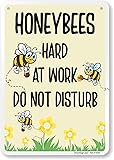All Categories


Science of Trapping: Describes the Fur Bearing Animals, Their Nature, Habits And Distribution, With Practical Methods For Their Capture
Share Tweet
Get it between 2025-06-26 to 2025-07-03. Additional 3 business days for provincial shipping.
*Price and Stocks may change without prior notice
*Packaging of actual item may differ from photo shown
- Electrical items MAY be 110 volts.
- 7 Day Return Policy
- All products are genuine and original
- Cash On Delivery/Cash Upon Pickup Available








About Science Of Trapping: Describes The Fur Bearing
Among the many outdoor occupations, trapping the furbearing animals is perhaps the most pleasant and in many instances is also very profitable. Although trapping was one of the earliest industries of this country, the occupation has not passed away, along with the vanishing wilderness, for there is more trapping done today than at any time during the past. Scattered all over North America, in both the thickly settled portions and the more remote districts are thousands of trappers who are each season deriving both pleasure and profit from this unique calling. Trapping in itself is an art. Many of the wild creatures are exceedingly wary and the trapper must match his reason against the instinct, the natural wariness and the acquired knowledge of the animals. This wariness alone has saved some species of animals from extinction, and although man is superior to all brute life, such intelligent animals as the fox and the wolf frequently prove a match for the most expert of trappers. In order to be successful, one must know the wild animals as a mother knows her child. He must also know and use the most practical methods of trapping, and it is my object to give in this work, the most successful trapping methods known. These modes of trapping the furbearing animals have for the most part been learned from actual experience in various parts of the country, but I also give the methods of other successful trappers, knowing them to be as good as my own. I am personally acquainted with some of the most expert trappers in North America and have also followed the Indians over their trap lines and in this way have learned many things which to the white man are not generally known. CONTENTS. I. The Trapper's Art II. The Skunk III. The Mink IV. The Weasel V. The Marten VI. The Fisher VII. The Otter VIII. The Beaver IX. The Muskrat X. The Fox XI. The Wolf XII. The Bear XIII. The Raccoon XIV. The Badger XV. The Opossum XVI. The Lynx XVII. The Bay Lynx or Wild Cat XVIII. The Cougar XIX. The Wolverine XX. The Pocket Gopher XXI. The Rabbit XXII. Tracks and Signs XXIII. Handling Furs XXIV. Steel Traps




 (1)
(1)






















